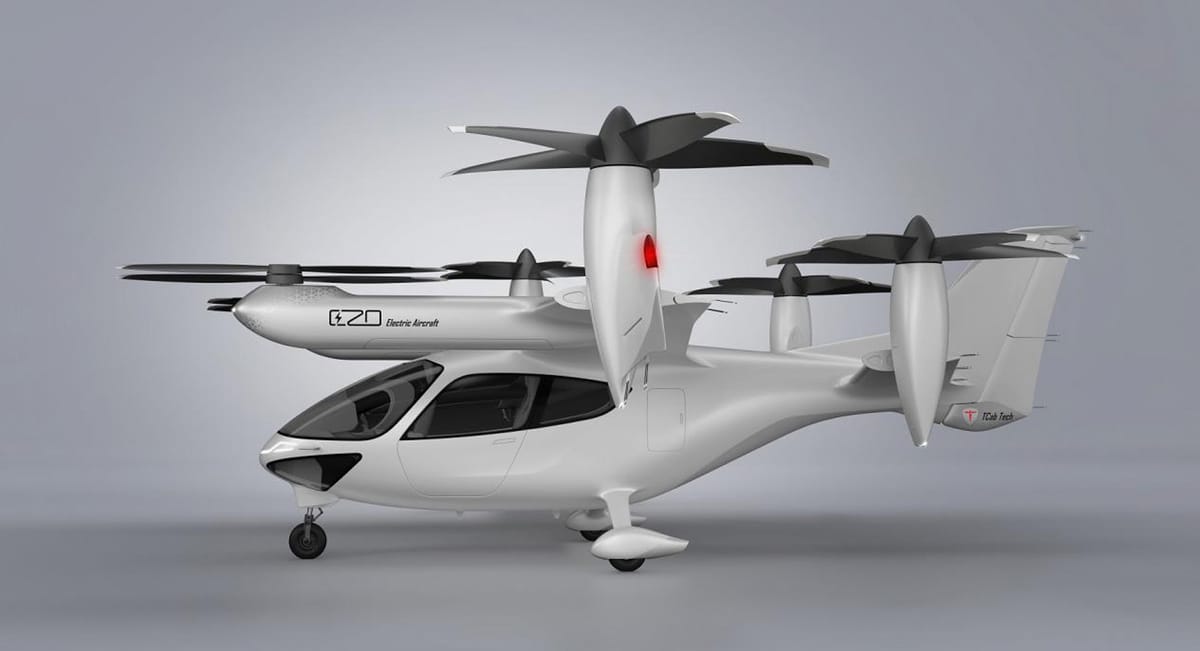Tcab Tech's E20 eVTOL Set for 2026 Commercial Debut, Targets Affordable Urban Air Mobility

Tcab Tech's domestically developed E20 eVTOL is currently in the final stages of airworthiness certification, with commercial operations anticipated to commence next year. This five-seater electric vertical takeoff and landing aircraft is poised to make urban air mobility more accessible and affordable, with an estimated travel cost of just 3 to 4 RMB per passenger per kilometer, demonstrating strong market competitiveness.
The E20 features an advanced tilt-rotor design, enabling both vertical takeoff and landing capabilities alongside efficient cruising. It boasts a maximum range of 200 km, a cruising speed of 260 km/h, and a top speed of 320 km/h, making it well-suited for a variety of urban and regional air transportation needs.
Passenger comfort is a key focus for the E20. It employs large-diameter, low-RPM five-blade propellers to significantly reduce operational noise. During cruising, the noise level is controlled at approximately 40 decibels, promising a quiet and pleasant journey for occupants. As a pure electric aircraft, the E20 utilizes a motor-driven, electrified architecture, which simplifies the power transmission structure and enhances both operational convenience and flight safety. Its advanced 800-volt high-voltage system not only boosts energy utilization efficiency but is also compatible with standard electric vehicle charging stations. This allows for rapid recharges from 20% to 85% in just 20 minutes, significantly improving operational turnaround times and overall efficiency.
Further solidifying its path to market, Tcab Tech broke ground earlier this month on its first E20 eVTOL intelligent manufacturing base in Wanzhi District, Wuhu City, Anhui Province. The initial phase of the project covers approximately 70 mu (about 4.67 hectares) and will be equipped with advanced digital manufacturing and testing facilities. Upon completion, the base will house two complete eVTOL assembly lines, boasting an annual production capacity of 200 units. This strategic development lays a robust foundation for future large-scale operations and the widespread adoption of urban air mobility.